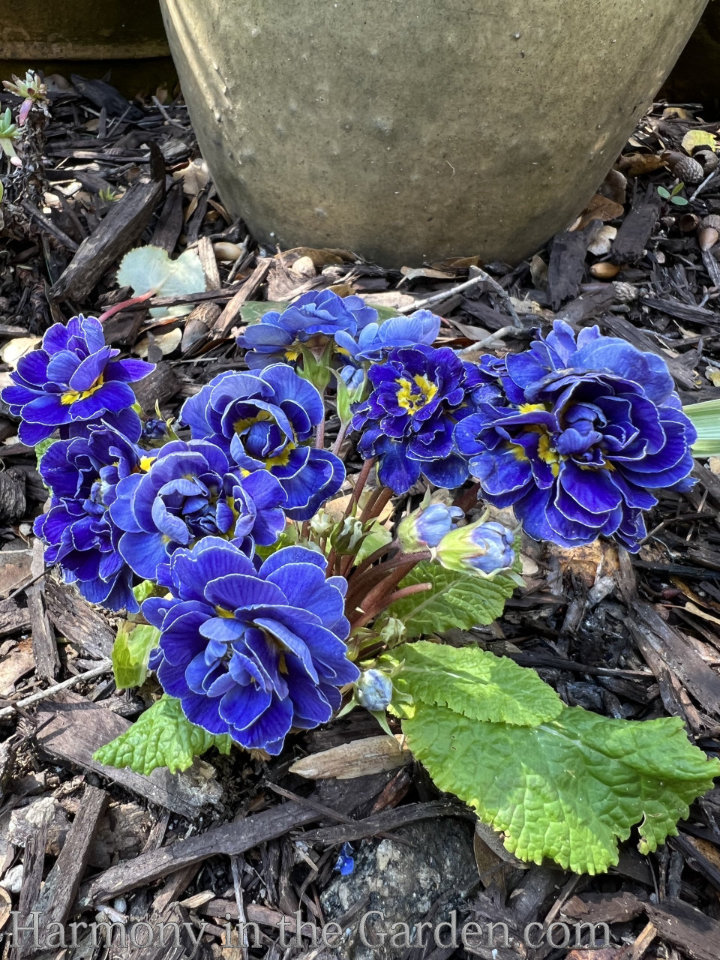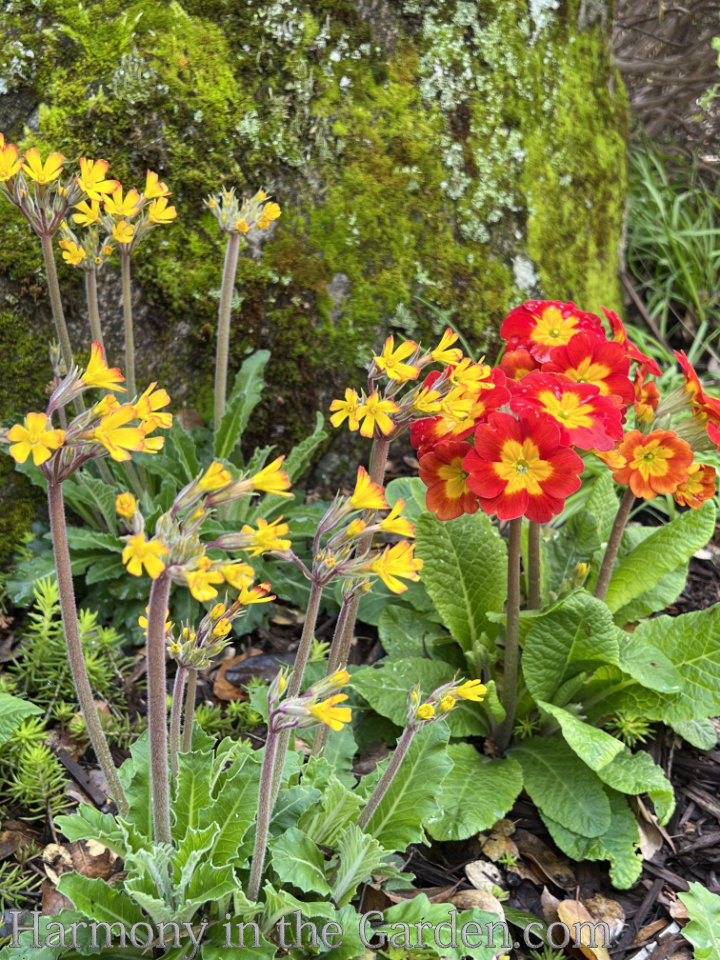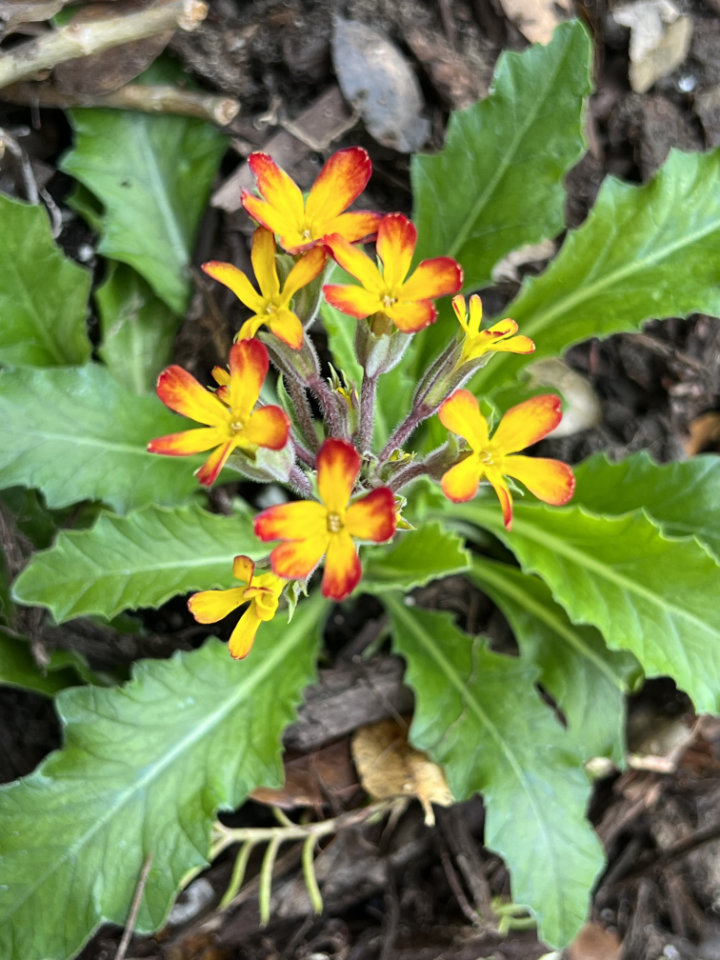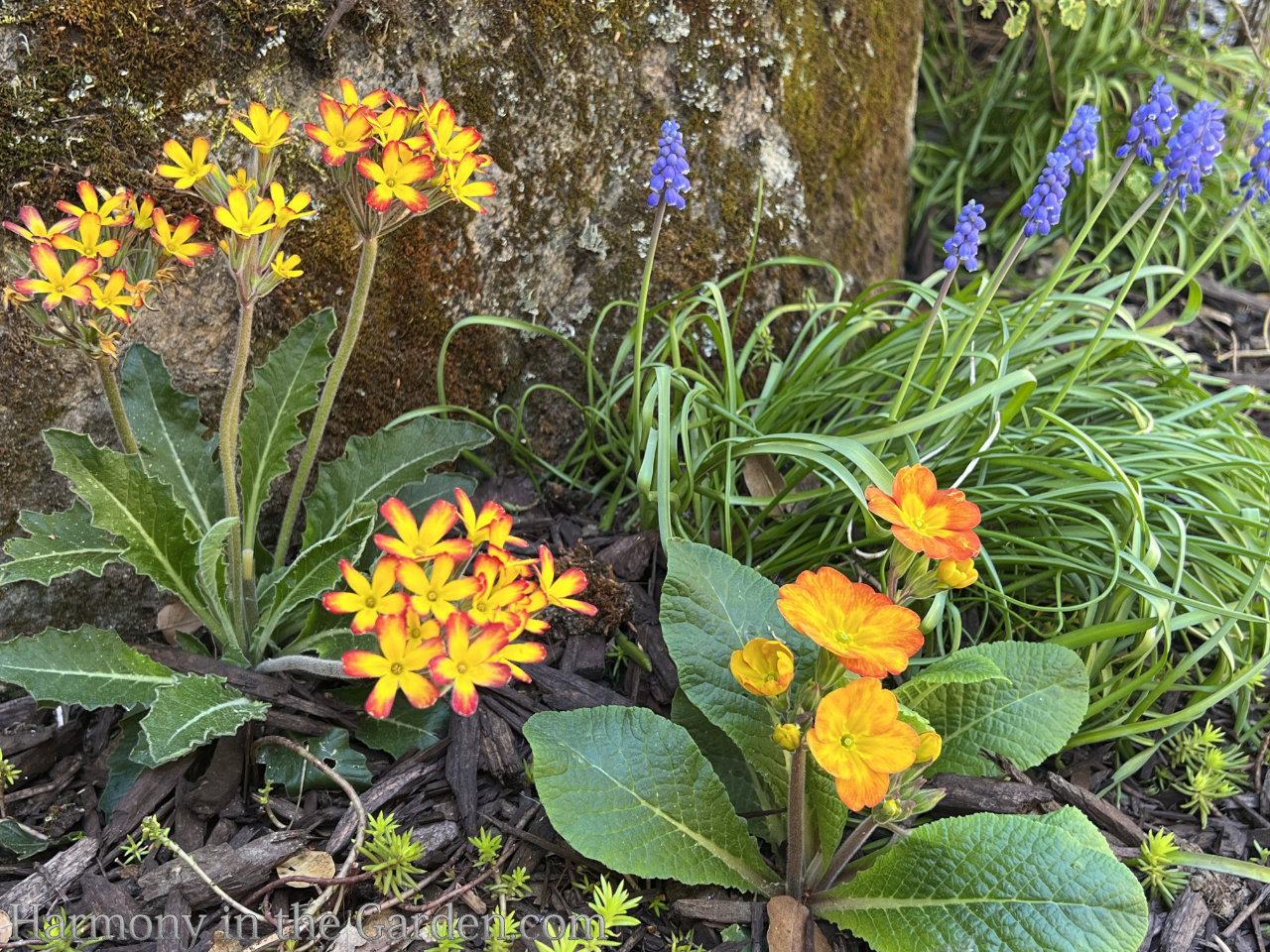Seeing row after row of pretty primroses arrive at the nursery is the best way to tell that spring is coming.
The botanical name of a primrose is primula, which comes from the Latin word ‘primus,’ meaning ‘first. ’ This is the perfect name for them, as they’re the trailblazers of the early spring garden. They’ll even bloom in January in warmer climates (like my zone 9 garden. ).
Another interesting fact is that their common name, “cowslip,” comes from the Old English word “sloppe,” which means dung or mud. This shows where they live in the wild: they add a splash of color to muddy, dung-filled fields.
They are planted in places that get morning sun, but when summer comes, they die back and go back underground until it gets cooler again.
A thick layer of mulch helps keep as much water in as possible and keeps temperature changes from being too big or too small.
Primula is a HUGE genus with more than 430 species. I love them all, even the most common variety, the primula vulgaris, found in nurseries everywhere.
The common ones have been bred into squatty little mounds with a carnival-like range of colors.
I remember the bright bowls of jelly beans my grandmother would set out at Easter every time I saw them in the nurseries.
Many gardeners look down on the poor little primrose, though, because they’re so common. They often think of them as a sign of old-fashioned, plain landscapes.
That’s too bad, because it doesn’t have to be this way! Primroses can shine in the early spring garden with a little planning and thought.
I prefer planting primroses en masse, either using a single color or those within the same color family.
This picture shows orange and yellow primulas, as well as my favorite oakleaf primula, which has gold flowers with orange tips (read more about this beauty below). ).
When you plant them this way, the design is more natural and relaxed, like how you might see them growing in the English countryside.
Primroses not only make you smile on a dark and rainy day, but they also provide early nectar for pollinators, such as brave bees and ladybugs that brave the cold.
Don’t get rid of the dead primrose flowers right away if you want them to grow back in your garden. This is a great way to get more plants that grow true to color, which helps you make the perfect drift.
Plus, if one plant gets too big and crowded, it’s easy to split it up in the early spring.
Below are a few of my favorite varieties that have reliably returned in my garden, year after year.
Primroses are beloved flowers that evoke images of spring with their delicate blossoms in an array of charming hues. But what are the typical colors of primroses found growing in the wild or adorning garden beds? Their palette is actually quite diverse!
Primroses come in a multifaceted spectrum of colors that ranges from bright and vibrant to soft and pastel. Here’s an in-depth look at the natural colors of these blooms and what makes their shades so varied
The Signature Primrose Shade: Pale Yellow
The most iconic and recognized primrose color is a pale, buttery yellow This sunny hue ranges from vibrant lemon to softer primrose yellow.
In the wild, pale yellow is the natural color that primroses display thanks to the yellow sap pigments in the plant. These natural plant chemicals called flavones give the blooms their light yellow tone.
So primrose yellow is the signature color most people think of when they picture this flower. This cheery hue reflects the joy of spring and new beginnings associated with primroses.
Pink Primroses Add Charm
While pale yellow is the best known, primroses actually come in a diverse range of colors – including charming pinks!
Soft pink primroses showcase delicate shades from pale blush pink to vivid fuchsia. Pink represents grace, romance, and appreciation.
Other pastel pink varieties include lilac, mauve, and lavender blooms with a dreamy, ethereal beauty.
Vibrant magenta pink primroses make a fun, bold statement in any garden.
Dynamic Purple Hues
Purple is another eye-catching primrose color. It covers the spectrum from pale lilac to deep wine purple shades.
The color purple evokes mystery, creativity, and spirituality. Deep hues like violet and amethyst have an elegant, regal beauty.
Pale purples and lavenders have a soft, romantic vibe. Dynamic two-toned varieties blend purple with other colors like yellow or white.
Bright Red Primroses
Although less common, red primroses can occur naturally. Their fiery crimson petals make these flowers pop against green foliage.
In the language of flowers, red symbolizes passion, love, and courage. Primroses in vibrant red hues carry an intense, dramatic beauty.
Deep burgundy varieties offer moody, luxurious shades. Softer reds provide a tender, romantic look.
Orange and Peach Tones
Primroses can display warm shades of orange and peach, but these colors are less prevalent.
Peachy-orange blooms evoke images of sunrise. Soft cantaloupe and coral peach shades have an elegant blush tone.
Clear bright orange varieties are bold accents that convey joy and excitement. Multicolored blooms include subtle peach or orange hues blended with other shades.
Blue is Rare but Stunning
Natural blue primroses are exceptionally rare, but achieving this color through cultivation is an ongoing quest of plant breeders.
Most blue primroses seen today are a result of careful hybridization. Rich sapphire, sky blue, and indigo varieties showcase this exotic color beautifully.
Pure White for Innocence
On the other end of the spectrum, pure white primroses represent innocence and purity. Their pristine snowy blooms feel fresh and clean.
Creamy ivory and pale butterscotch flowers provide softer off-white hues. White sets off brighter colors beautifully when combined in multicolored varieties.
Primrose Color Origins
So where does this diverse palette originate? Primrose color variations arise from:
- Genetics – Color-producing genes.
- Species differences – Hundreds of primrose species each have distinct colors.
- Growing conditions – Climate, soil, elevation, and moisture affect color.
- Selective breeding – Horticulturists crossbreed varieties to develop new colors and patterns.
Symbolic Meaning of Colors
Beyond aesthetics, the stunning colors of primroses carry cultural symbolism:
- Yellow – Friendship, new beginnings
- Pink – Admiration, appreciation
- Red – Passion, desire
- Purple – Spirituality, elegance
- White – Purity, innocence
The diverse palette of primrose colors is a testament to nature’s paintbox. From prismatic pastels to vivid crimsons, these charming flowers enliven gardens with their rainbow of hues.

Primula vulgaris ‘Belarina Amethyst Ice’ and ‘Belarina Cream’

The Belarina series comes in a number of colors, and in addition to having beautiful flowers, they tend to be much more resistant to both cold and heat than other types.
Yes, I can vouch for the heat because they come back every spring (after my very hot summers) bigger and better than before.
The flowers of the “Amethyst Ice” are blue-lavender and double, with the thinnest line of white around the edges of the petals.
Pollinators can get to flowers with only one petal much more easily, so I don’t usually plant flowers with two petals.
But in this instance, I couldn’t help myself. That’s okay, little bees; just move on to the larger patch of single-petaled varieties and feast away.
The first picture shows “Belarina Cream,” which has the softest shade of creamy white and looks like a small gardenia.
Primula vulgaris ‘Oakleaf Yellow Picotee’

I absolutely love this variety of primrose for several reasons.
For one, it grows taller than most other vulgaris varieties, up to 18 or more!
The flowers are unique, as well. They’re not as big as a normal primrose. They have small yellow petals with orange edges that are grouped together on top of tall, strong stems.

And unlike other primroses, whose leaves are big, oval, and wrinkly, the “Oakleaf” has leaves that look like oak leaves!
A different feature of these primroses is that they are very hardy and their leaves don’t seem to get eaten by slugs and snails as much as other plants do!

What color is Primrose Path ? #ffe262 hex color – Yellow color – Warm colorr ffe262
FAQ
Is primrose pink or purple?
What color is primrose pale?
What color goes with primrose?
What color is pale primrose?
What color is a Primrose?
Purple: Purple primroses come in various shades, from lavender to deep violet. The color purple is often associated with spirituality and creativity. These primroses bring a sense of mystery and enchantment to any garden. Red: While less common than other hues, red primroses make a bold statement.
What is a primrose flower?
The beauty of primroses lies in the array of colors they exhibit, ranging from vibrant and eye-catching to soft and pastel. These blossoms are known for their delicate and often multicolored petals, creating intricate patterns and gradients that captivate the eye.
What colors of primroses add a unique touch to a garden?
However, there are some rare colors of primroses that add a unique and unexpected touch to any garden. In this section, we will explore the captivating world of purple, blue, and orange primroses. Purple primroses are a true delight for the eyes. Their deep, rich hues create a sense of mystery and elegance in any garden.
Do primroses have blue flowers?
While blue is not a common color in the plant kingdom, there are a few species of primroses that boast this elusive shade. One such species is the Primula veris ‘Blue Bedder’, a hybrid primrose that showcases beautiful blue flowers. This particular variety is known for its vibrant color and its ability to attract butterflies and bees.
What is a Green Primrose?
The green color gives them an enchanting and refreshing appearance, making them stand out among other flowers. One of the fascinating aspects of green primroses is their ability to blend seamlessly with other plants and flowers. They add a unique touch to floral arrangements, providing a striking contrast against more vibrant hues.
What is a purple Primrose?
One of the most popular purple primroses is the Primula vialii, also known as the orchid primrose. This striking plant features tall flower spikes adorned with clusters of small, tubular flowers that resemble tiny orchids. Its vibrant purple color, combined with its unusual shape, makes it a standout in any garden.
- A Complete Guide to Caring for Yuki Cherry Blossom Shrub - January 23, 2025
- Identifying Red Hot Poker Seeds: What to Look For When Harvesting Torch Lily Pods - January 23, 2025
- A Complete Guide to Harvesting Evening Primrose Seeds - January 23, 2025
